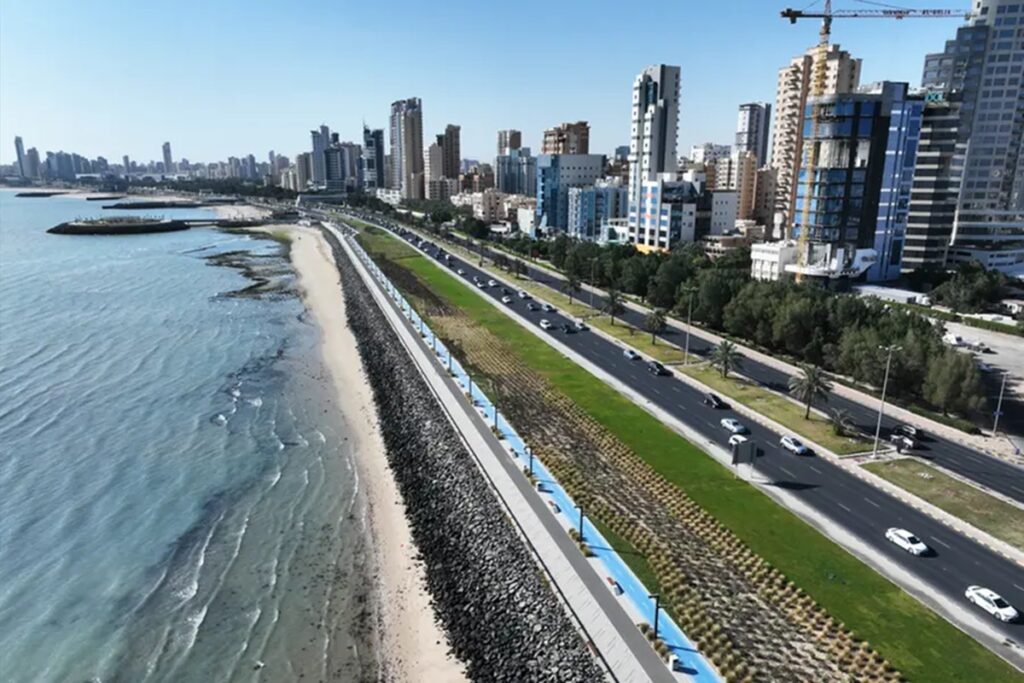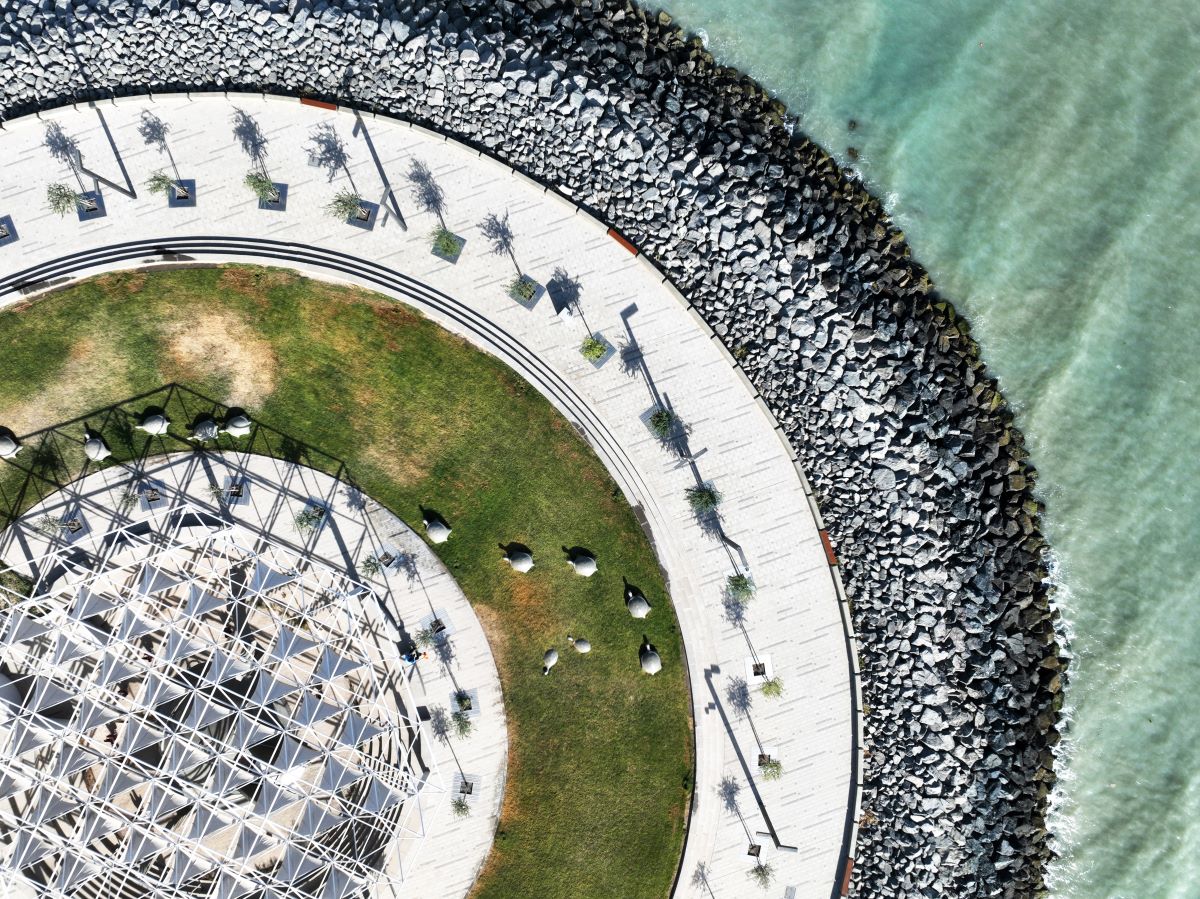Kuwait has officially unveiled the second phase of its highly anticipated waterfront development project, marking a significant milestone in the country’s ambitious urban transformation plan. The newly completed 5-kilometer stretch, which extends from the iconic Green Island to the Yacht Club in Salmiya, offers a unique blend of recreational spaces, sustainable infrastructure, and modern amenities designed to enhance the lifestyle of residents and attract tourists from across the region.
This monumental phase of the waterfront project brings to life an array of features that focus not only on functionality and aesthetics but also on sustainability and the environment. With a combination of green spaces, pedestrian pathways, and state-of-the-art infrastructure, the project aims to set a new standard for urban waterfront developments in the Middle East.
Key Features of Phase 2
1. Expansive Green Spaces: One of the most notable features of Phase 2 is the large number of green spaces introduced throughout the area. The new development includes lush parks, landscaped gardens, and public plazas that provide a serene and relaxing environment for both residents and visitors. These spaces are designed to encourage outdoor activities, social gatherings, and a closer connection with nature. The extensive pedestrian-friendly walkways allow people to stroll along the coastline, enjoying the scenic views of the sea while engaging in leisurely activities like jogging or cycling.

2. Sustainable Infrastructure: A key focus of this project is the integration of environmentally sustainable infrastructure. The development includes solar-powered lighting along the pathways, reducing the project’s overall carbon footprint and making it energy-efficient. Additionally, there are electric vehicle (EV) charging stations strategically placed throughout the area, promoting the use of eco-friendly transportation options. By incorporating these green technologies, the waterfront development aligns with Kuwait’s broader commitment to environmental sustainability and reducing its environmental impact.
3. Enhanced Accessibility and Connectivity: With the rapid growth of Kuwait’s population and an increasing demand for modern infrastructure, accessibility and convenience have been top priorities in the design of the waterfront development. The addition of over 4,000 parking spaces ensures that both residents and tourists can easily access the area, making it a practical and attractive destination for leisure, business, and entertainment. Furthermore, the development includes dedicated cycling tracks that cater to the growing number of cyclists in the region, offering a safe and convenient route for those who prefer an eco-friendly mode of transportation.
4. Cutting-Edge Facilities and Modern Amenities: Phase 2 of the Kuwait Waterfront Development also introduces a wide range of modern facilities and amenities designed to enhance the experience of visitors and residents alike. From state-of-the-art recreational areas, such as sports fields and children’s playgrounds, to cultural hubs featuring art galleries, museums, and performance spaces, the development offers a vibrant and dynamic atmosphere for people of all ages and interests. Additionally, waterfront dining options, cafés, and retail outlets are set to create a lively commercial hub, offering a mix of local and international brands.
5. Cultural and Community Spaces: The development is not only about creating a visually stunning coastal area but also about fostering a sense of community. A significant portion of the project has been dedicated to creating cultural and community spaces that will host events, festivals, and exhibitions. These spaces will serve as venues for local artists, performers, and craftsmen to showcase their work, contributing to the cultural fabric of Kuwait. Whether it’s through outdoor concerts, seasonal festivals, or public art installations, the waterfront will become a central gathering point for cultural expression and social interaction.
Strategic Importance for Kuwait’s Vision 2035
The Kuwait Waterfront Development aligns closely with the country’s Vision 2035, a long-term plan aimed at diversifying Kuwait’s economy and improving the quality of life for its citizens. With a growing focus on sustainable development, tourism, and smart city initiatives, this waterfront project is seen as an essential part of Kuwait’s efforts to position itself as a regional leader in innovation, sustainability, and urban development.
By transforming its coastline into a modern, accessible, and green urban space, Kuwait hopes to attract both local and international tourists, boost its hospitality sector, and create a welcoming environment for businesses and investors. The waterfront development is expected to create numerous job opportunities, stimulate economic growth, and improve the overall livability of the city.
As part of its broader strategy, Kuwait aims to make the waterfront an integrated part of the city’s infrastructure. The development will connect seamlessly with other key areas, such as the financial district and cultural centers, making it a vital component of the nation’s urban landscape. By creating a harmonious blend of commercial, residential, and recreational spaces, the waterfront project will contribute significantly to the city’s economic, social, and environmental development.
The Future of Kuwait’s Waterfront: Expanding Opportunities
Looking to the future, the Kuwait Waterfront Development is poised to become a central hub for a variety of cultural and leisure activities. In addition to the current recreational areas and green spaces, plans are already in place for the next stages of development. These will include more commercial and residential units, entertainment facilities, and tourist attractions that will further enhance the appeal of the area.
The project is also part of a larger regional trend of waterfront redevelopment, where urban spaces are reimagined to offer more than just housing or office spaces. As cities across the Middle East undergo rapid modernization, the Kuwait Waterfront stands out as a model for sustainable urban design. With its emphasis on green initiatives, energy efficiency, and cultural integration, it sets a strong precedent for future developments in the region.
Conclusion: A Sustainable and Vibrant Urban Future
The completion of Phase 2 of the Kuwait Waterfront Development marks a crucial step toward realizing a sustainable and vibrant urban future for the country. The project combines modern infrastructure, environmental responsibility, and community engagement, setting a high standard for urban waterfront developments in the region. As Kuwait continues to grow and evolve, this development will serve as a key landmark in its journey towards becoming a more sustainable, connected, and livable city.
By focusing on green innovations, accessibility, and community-driven spaces, Kuwait’s waterfront development is not just a place to visit but a place to thrive—making it a central part of the country’s future urban landscape. As Phase 2 opens its doors to the public, it becomes clear that this waterfront project will play a pivotal role in shaping Kuwait’s next chapter in urban development, offering both residents and visitors a dynamic, sustainable, and modern environment to enjoy for years to come.
Zain Kuwait Achieves ISO 37301 Certification for Compliance Management



